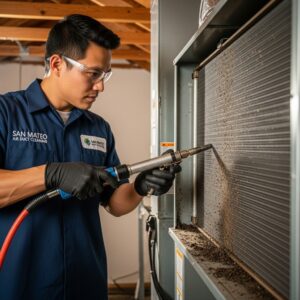Picture this: you’re running a pharmaceutical manufacturing plant in South Africa, churning out life-saving medications. The stakes are high, the pressure’s on, and then someone mentions GMP certification. Suddenly, you’re wondering if it’s just another bureaucratic hurdle or the key to keeping your operation humming. Spoiler alert—it’s the latter. Good Manufacturing Practices (GMP) certification isn’t just a badge to slap on your website; it’s your ticket to trust, quality, and global markets. For South African manufacturers, navigating GMP through the South African Health Products Regulatory Authority (SAHPRA) can feel like trekking through the Drakensberg without a map. But don’t worry—this article’s your guide, packed with practical tips, a dash of local flavor, and a human touch to make sense of it all.
Why GMP Certification Matters in Mzansi
Let’s start with the basics. GMP is the gold standard for ensuring your pharmaceuticals are safe, effective, and consistent. In South Africa, SAHPRA enforces GMP based on guidelines from the World Health Organization (WHO) and the Pharmaceutical Inspection Co-operation Scheme (PIC/S). It covers everything from how you clean your equipment to how you train your staff. Get it right, and you’re not just compliant—you’re building a reputation that opens doors to markets in Europe, the U.S., and beyond.
But here’s the real talk: gmp certification south africa isn’t just about pleasing regulators. It’s about the people who rely on your products. Think about the auntie in Soweto picking up her hypertension meds or the kid in Durban needing an asthma inhaler. Your work keeps them going. Mess up, and the consequences aren’t just fines or bad press—they’re personal. That’s the weight of GMP, and it’s why South African manufacturers can’t afford to cut corners.
You know what’s wild? South Africa’s pharmaceutical industry is a powerhouse in Africa, producing over 70% of the continent’s medicines. But with great power comes great scrutiny. SAHPRA’s inspections are rigorous, and global partners expect you to match their standards. GMP certification isn’t optional—it’s your entry fee to the big leagues.
The South African GMP Landscape: What You’re Up Against
Before we dig into the how-to, let’s map out the terrain. SAHPRA oversees GMP compliance in South Africa, and they don’t play around. Their guidelines align with international standards, but they’re tailored to local realities—like our diverse supply chains and occasional load-shedding curveballs. Here’s what you’re dealing with:
- Facility Standards: Your manufacturing site needs to be spotless—think hospital-level clean. That means proper ventilation, pest control, and equipment that’s maintained like a prized bakkie.
- Documentation: Every step of your process needs to be recorded. Batch records, standard operating procedures (SOPs), training logs—if it’s not written down, it didn’t happen.
- Quality Control: You need systems to test raw materials, in-process products, and finished goods. No cutting corners, even when deadlines loom.
- Staff Training: Your team needs to know GMP inside out. From the cleaner to the plant manager, everyone’s got a role in compliance.
Sounds like a lot, right? It is. But it’s not insurmountable. Think of GMP like braaiing a perfect sosatie—you need the right ingredients, a steady hand, and a bit of patience to get that smoky, delicious result.
The Emotional Side of Chasing GMP
Can we pause for a moment? Chasing GMP certification isn’t just a technical grind; it’s a rollercoaster. You’re juggling budgets, training schedules, and the constant fear of an unannounced SAHPRA inspection. It’s enough to make anyone question their life choices. I remember chatting with a quality manager in Cape Town who said she dreams about audit checklists. That’s the kind of pressure we’re talking about.
But there’s a flip side. When you nail GMP, it’s like scoring the winning try in a Springboks match. Your team feels unstoppable, your customers trust you, and you know you’re making a difference. That’s the fuel that keeps you going, even when the paperwork piles up.
So, how do you keep your team from burning out? It starts with connection. Share stories about why your work matters—maybe it’s the clinic in Limpopo that relies on your generics or the export deal that’s boosting the local economy. When people see the bigger picture, they’re more likely to embrace the grind.
Your Step-by-Step Guide to GMP Certification in South Africa
Alright, let’s get practical. How do you go from “GMP sounds nice” to holding that SAHPRA certificate? Here’s a roadmap that’s worked for manufacturers from Johannesburg to Gqeberha.
1. Know the Rules Inside Out
Start by getting cozy with SAHPRA’s GMP guidelines. They’re available on the SAHPRA website, and they’re surprisingly readable—no law degree required. You’ll also want to check out PIC/S standards, since SAHPRA’s a member. Pro tip: don’t just skim. Assign someone on your team to be the GMP guru, someone who can translate jargon like “validation protocols” into plain English for the rest of the crew.
2. Assess Your Gaps (No Sugarcoating)
Be honest—where are you falling short? Maybe your documentation’s a mess, or your cleanroom’s not as clean as it should be. Conduct a self-audit using SAHPRA’s GMP checklist. If that feels daunting, bring in a consultant. Companies like SGS South Africa or local firms like PharmOut specialize in GMP readiness. They’re like the GPS you need to navigate a new city.
Here’s a quick aside: I once worked with a manufacturer who thought they were audit-ready until a consultant pointed out their water purification system wasn’t up to spec. It was a costly fix, but it saved them from failing an inspection. Moral of the story? Don’t assume—check.
3. Build a Compliance Culture
GMP isn’t just for the quality team—it’s everyone’s job. Train your staff regularly, but don’t make it a lecture. Use real-world examples, like the 2018 listeriosis outbreak tied to poor manufacturing practices. It’s a grim reminder, but it drives the point home. Celebrate small wins, too. Did your team ace a mock audit? Buy some biltong and call it a day.
4. Invest in the Right Tools
Technology can make GMP easier. Electronic Quality Management Systems (eQMS) like MasterControl or local solutions like QAD can streamline documentation and track compliance in real-time. If load-shedding’s a concern (and let’s be honest, it is), invest in backup power for critical systems. Just don’t go overboard—fancy tech’s useless if your team doesn’t know how to use it.
5. Ace the SAHPRA Inspection
When SAHPRA comes knocking, be ready. They’ll look at everything—your facility, your records, even how you handle complaints. Be transparent. If there’s a minor issue, own it and show how you’re fixing it. Inspectors aren’t out to get you; they want to see you’re serious about quality. After the inspection, you’ll get a report. Address any findings quickly, and you’re on your way to certification.
Local Challenges, Local Solutions
South Africa’s unique, and so are its challenges. Load-shedding can disrupt production, and supply chain issues—especially for imported raw materials—can throw a spanner in the works. Then there’s the skills gap; finding trained GMP experts in smaller towns like East London isn’t always easy.
But South Africans are nothing if not resourceful. Look at how local manufacturers like Aspen Pharmacare have become global players. They’ve tackled these challenges by investing in local talent, building robust supply chains, and leaning on partnerships. For example, collaborating with universities like Wits or UCT for training programs can help bridge the skills gap. And when it comes to load-shedding, solar panels or generators aren’t just nice-to-haves—they’re GMP essentials.
Turning GMP into Your Superpower
Here’s a thought to chew on: GMP certification isn’t just about compliance; it’s about standing out. In a competitive market, being GMP-certified signals quality. It’s the difference between being a trusted supplier to Africa’s growing healthcare sector and being just another name on the list. Companies like Cipla South Africa have used GMP to break into international markets, proving Mzansi’s got what it takes.
Plus, GMP forces you to tighten up your operations. Better processes, happier staff, fewer recalls—it’s a win-win. So, instead of seeing GMP as a chore, treat it like a braai with mates. It takes prep, coordination, and a bit of flair, but the result’s worth it.
Wrapping Up: The Heart of GMP in South Africa
At its core, GMP certification is about trust. It’s about knowing the tablets you produce in Pretoria or the injectables from Port Elizabeth are safe for someone’s mom, brother, or best friend. It’s about proving South Africa’s pharmaceutical industry can compete with the best while serving our people.
So, as you embark on your GMP journey, keep the big picture in mind. It’s not just about passing an inspection; it’s about building a legacy. Take it one step at a time, lean on your team, and maybe even enjoy the process. After all, in a country as vibrant as ours, even compliance can have a bit of soul.

